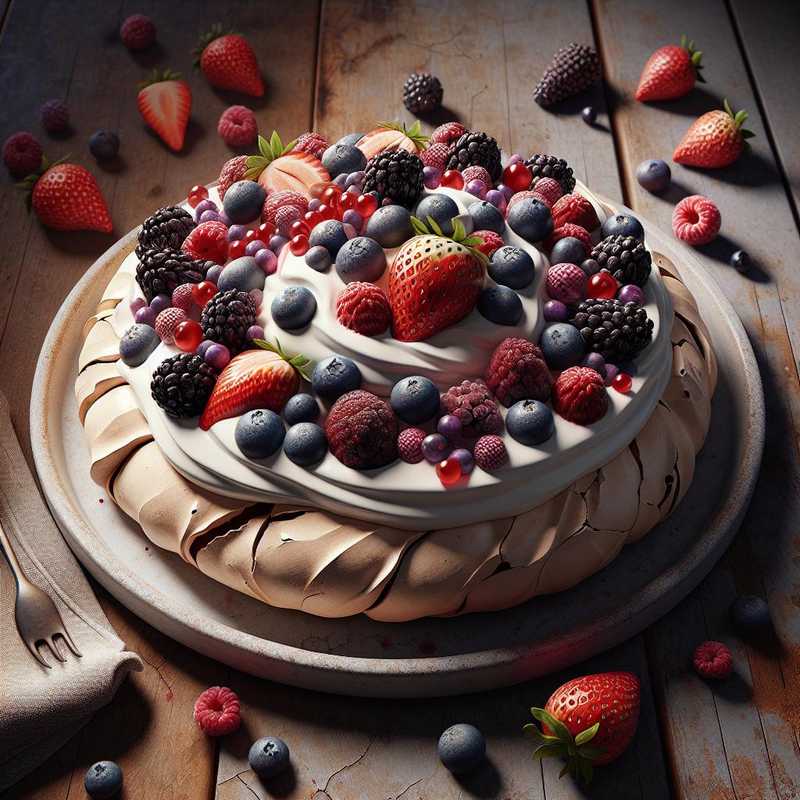Pavlova with Chantilly Cream and Berries
17/11/2023Pavlova is an elegant dessert, crunchy on the outside and soft on the inside, originating from Australia or New Zealand, and dedicated to the Russian ballerina Anna Pavlova. Here is the recipe with an Italian twist in the preparation of the Chantilly cream:
Ingredients
- 4 room temperature egg whites
- 1 pinch of salt
- 250 g of caster sugar
- 2 teaspoons of cornstarch
- 1 teaspoon of white wine vinegar
- 1 teaspoon of vanilla extract
- 200 ml of fresh cream for desserts
- 2 tablespoons of powdered sugar
- Assorted berries (raspberries, blueberries, strawberries, red currants, etc.)
- Fresh mint for decorating (optional)
Preparation
- Preheat the oven to 120°C and place parchment paper on a baking sheet.
- Whip the egg whites with a pinch of salt until they become foamy. Gradually add the caster sugar, continuing to whip until the meringue is glossy and firm.
- Fold in the cornstarch, white wine vinegar, and vanilla extract, gently incorporating them with a spatula.
- Pour the meringue onto the parchment paper, forming a circle about 20 cm in diameter and creating a slight hollow in the center.
- Bake in the oven for 1 hour and 30 minutes or until the meringue is crispy on the outside. Then turn off the oven and leave the pavlova inside with the door slightly open until it cools completely.
- For the chantilly cream, whip the cream with the powdered sugar until it is firm but soft.
- Once the meringue is cold, gently remove it from the paper and transfer it to a serving plate. Fill the hollow with the chantilly whipped cream.
- Arrange the fresh berries on top of the chantilly cream and decorate with mint leaves if desired.
Serve the Pavlova immediately after assembling it with the cream and berries, to enjoy the contrast between the external crunchiness and the internal softness of the meringue.
Curiosity
The Pavlova was created in honor of the famous Russian ballerina Anna Pavlova during one of her tours in Australia or New Zealand in the 1920s - its lightness and delicacy were inspired by the dancer herself. Each country claims the origin of this dessert, and to this day a friendly “culinary conflict” persists.
